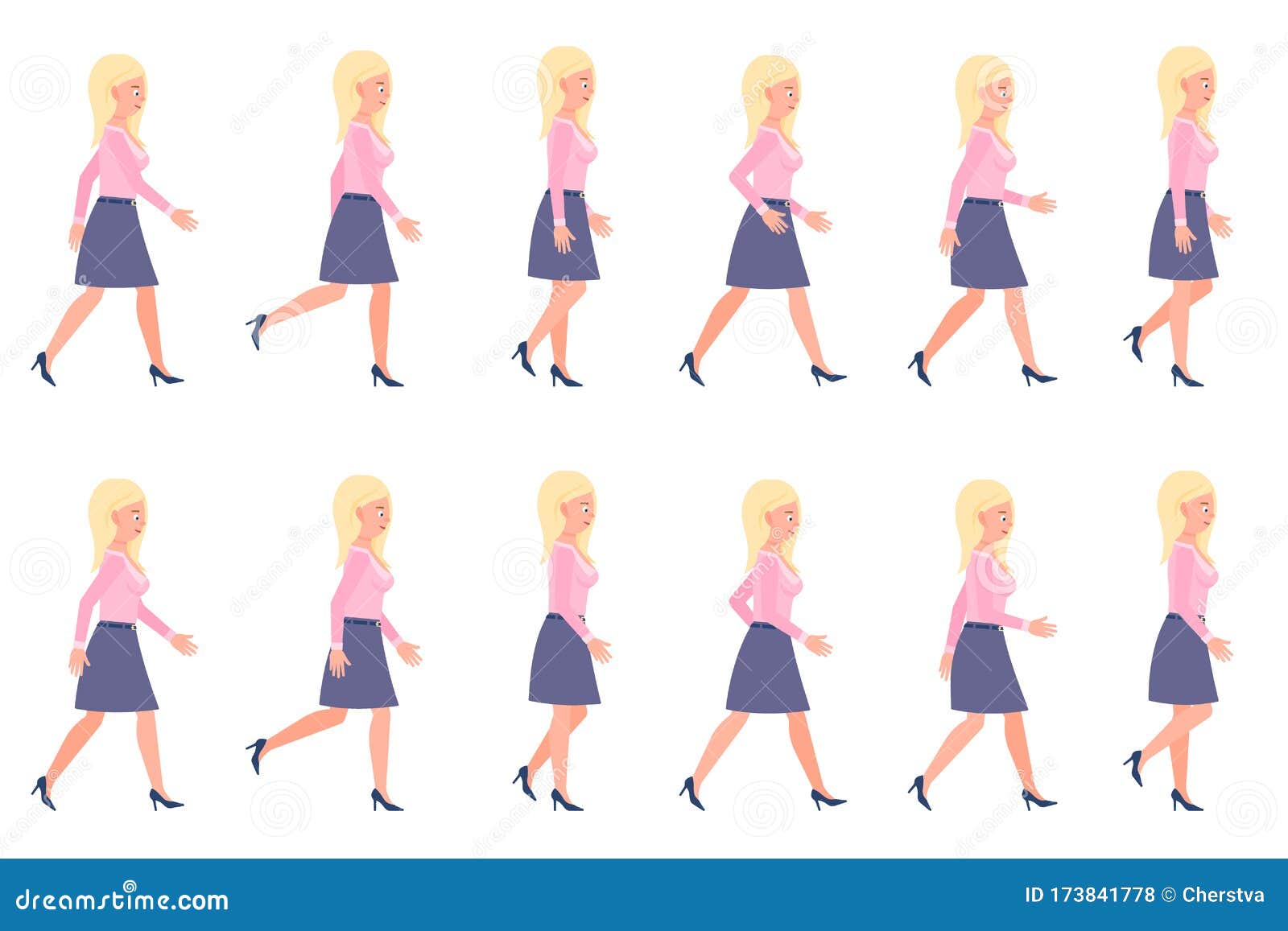Going Live Update 21/03/23
 Figure 1: Woman walking forward animation cycle: https://thumbs.dreamstime.com/z/young-adult-woman-walking-sequence-poses-vector-illustration-moving-forward-fast-slow-going-person-cartoon-character-set-white-173841778.jpg
Figure 1: Woman walking forward animation cycle: https://thumbs.dreamstime.com/z/young-adult-woman-walking-sequence-poses-vector-illustration-moving-forward-fast-slow-going-person-cartoon-character-set-white-173841778.jpg
In order to make my animation of Nikko ready for showing to Wild Child, it requires forward movement on the base so that it successfully go from point A to point B on the yellow brick road when imported into the final pitch deck scene. This is another task that will inevitably involve a lot of trial and error. Whilst the animation in its current phase is great for a video game, since the character's movement is determined by the player's input, in the context of a film, the character needs to be moving on its own. The first method that I tried using involved just two keyframes at the start and end points of the animation, using the grid in Maya as a guide, which you can imagine resulted in the figure sliding across the plane and looking incredibly unconvincing. The second method I tried, which is the more professional method was animating the character in increments where the distance the figure travelled correlates with how much the foot pushes the body forward. This method was also recommended by the tutor. Once I perfect the correlation between the body movement and the footwork, I can set the curves to cycle with offset and let the model carry itself the rest of the way, but this will require a infinite deal of fine tuning.

Figure 2: Maya walkcycle test with time editor: https://help.autodesk.com/cloudhelp/2023/ENU/Maya-Animation/images/GUID-6879DFC2-6E72-4A6D-A98F-3FAC3609051C.gif
It was mentioned that if the character would need to stop, that stage would require additional animation of the character coming to a halt, which would become difficult when the character is set on a cycle. The original model has also been updated since I started animating with Nikko, which means the reference will likely need updating. For the timebeing, I have been advised to stick with the V2 model. The tin man still has yet to be finished, so I cannot begin animating him just yet. He is definitely going to be the harder model to animate since his walkcycle, given the movements and lack of adaptability. My first attempts with the strut walk cycle resulted in a walk cycle with fairly decent leg movement, but the arm movement was gnarly, jerky and unnatural. I've also learned from this experience that what looks good in 2D may not look good in 3D, particularly from the front and back where you'll need more movement in the knee area and rotating heels.

No comments:
Post a Comment